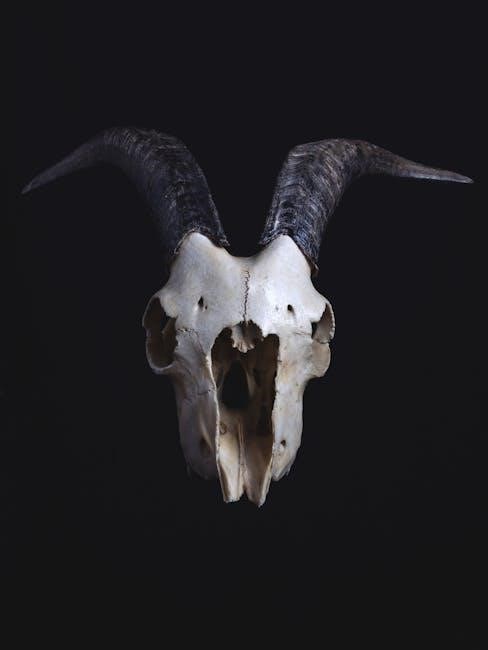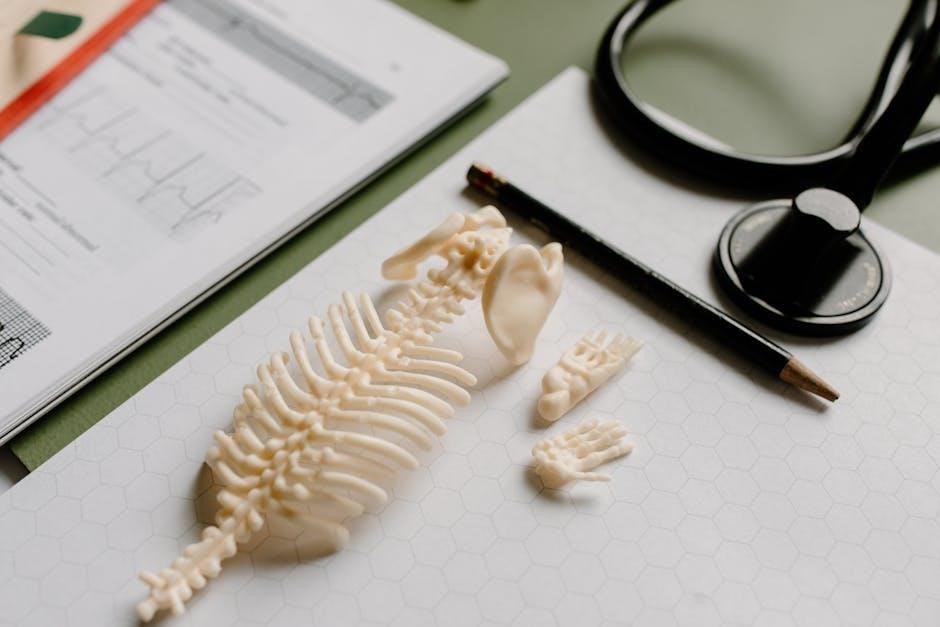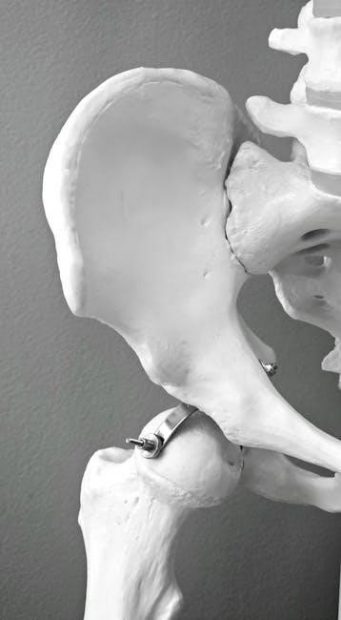The humerus is the longest and largest bone in the upper limb, extending from the shoulder to the elbow. It forms the structural foundation of the arm, connecting the shoulder and elbow joints, and serves as a vital attachment point for muscles, including the rotator cuff. Its complex anatomy ensures mobility and strength in the upper limb, making it essential for both functional movement and stability.
1.1 Definition and Overview
The humerus is a long bone in the upper limb, extending from the shoulder to the elbow. It is the longest and largest bone of the upper extremity, serving as the skeletal foundation of the arm. The humerus features a proximal head articulating with the scapula and a distal end connecting to the forearm bones, Radius and Ulna. Its structure includes key anatomical landmarks like the anatomical neck and greater tubercle, essential for muscle attachments and joint mobility. This bone plays a critical role in both mobility and stability, supporting a wide range of movements while providing strength to the upper limb.
1.2 Importance in Upper Limb Anatomy
The humerus is central to upper limb anatomy, serving as the primary connector between the shoulder and elbow joints. It provides structural support and enables a wide range of movements, from flexion to rotation. Its surface features, such as the deltoid tuberosity, facilitate muscle attachments, ensuring functional mobility and strength. This bone is essential for both the stability and versatility of the upper limb, making it indispensable for daily activities and complex motions.
Proximal Humerus Anatomy
The proximal humerus includes the humeral head, anatomical neck, and greater tubercle. These structures facilitate articulation with the glenoid and attachments for rotator cuff muscles, ensuring shoulder mobility and stability.
2.1 Humeral Head and Glenohumeral Joint
The humeral head is a rounded, smooth articular surface at the proximal end of the humerus. It articulates with the glenoid cavity of the scapula, forming the glenohumeral joint. This joint is a ball-and-socket synovial joint, providing extensive mobility in multiple planes, including flexion, extension, abduction, and rotation. The humeral head is circumscribed by the anatomical neck, which offers attachment points for the joint capsule and stabilizing ligaments. The joint’s stability is enhanced by the labrum and surrounding muscles, particularly the rotator cuff, which are crucial for maintaining joint integrity and facilitating movement. This joint is essential for the wide range of motions in the shoulder, making it one of the most flexible joints in the human body.
2.2 Anatomical Neck and Greater Tubercle
The anatomical neck is a groove distal to the humeral head, serving as the attachment point for the joint capsule. The greater tubercle, located lateral to the anatomical neck, features three facets for muscle attachments. These facets accommodate the supraspinatus, infraspinatus, and teres minor muscles, which are part of the rotator cuff. This region is critical for shoulder movement and stability, facilitating abduction and external rotation.

Humerus Shaft Anatomy
The humerus shaft, or diaphysis, is a long, cylindrical structure between the proximal and distal ends. It features the deltoid tuberosity and radial groove, crucial for muscle and nerve attachments, ensuring functional mobility and structural integrity.
3.1 Deltoid Tuberosity and Muscle Attachments
The deltoid tuberosity, a prominent roughened area on the humerus shaft, serves as the primary attachment point for the deltoid muscle. This muscle plays a key role in shoulder flexion, extension, and abduction. Additionally, nearby regions of the shaft provide insertions for other muscles, enhancing upper limb mobility and functionality through coordinated muscle action and bone interaction.
3.2 Spiral Groove and Radial Nerve Pathway
The spiral groove, located on the posterior aspect of the humerus shaft, accommodates the radial nerve. This nerve runs through the groove, providing innervation to the extensor muscles of the forearm and wrist. The spiral groove’s anatomical position ensures protection and proper routing of the radial nerve, which is crucial for hand and finger function.

Distal Humerus Anatomy
The distal humerus includes the condyles and epicondyles, which articulate with the radius and ulna to form the elbow joint, enabling flexion and extension movements.
4.1 Condyles and Epicondyles
The distal humerus features two condyles (medial and lateral) that articulate with the radius and ulna, forming the elbow joint. The epicondyles, located on either side, serve as attachment points for forearm muscles and ligaments, facilitating movement and stability. These structures are crucial for joint function and musculoskeletal support.
4.2 Articulation with Radius and Ulna
The distal humerus forms the elbow joint, articulating with the radius and ulna bones of the forearm. The medial condyle connects with the ulna, while the lateral condyle articulates with the radius, enabling flexion and extension. This joint structure allows for precise movement and load transfer between the upper arm and forearm, supported by surrounding ligaments and muscles for stability.

Clinical Relevance of Humerus Anatomy
Understanding humerus anatomy is crucial for diagnosing and treating fractures, injuries, and conditions affecting the upper limb. Accurate knowledge aids in effective surgical interventions and rehabilitation strategies.
5.1 Fracture Types and Treatment
The humerus is prone to fractures, particularly in the proximal and distal regions. Proximal humerus fractures are common in older adults, often due to osteoporosis. Treatment varies; nondisplaced fractures may require immobilization, while displaced fragments necessitate surgical intervention, such as open reduction and internal fixation (ORIF) with plates or screws. Midshaft and distal fractures also require precise alignment to restore function and mobility.
5.2 Surgical Interventions in Humerus Fractures
Surgical interventions for humerus fractures include open reduction and internal fixation (ORIF) with plates or screws to stabilize bone fragments. In severe cases, arthroplasty may be required, replacing the fractured portion with a prosthetic. These procedures aim to restore alignment, ensure proper healing, and preserve upper limb function, addressing both proximal and distal fractures effectively.
Radiological Features of the Humerus
The humerus appears as a long, cylindrical bone on X-rays, with distinct features like the humeral head, anatomical neck, and condyles visible. MRI provides detailed views of bone marrow, cortical integrity, and surrounding soft tissues, aiding in fracture detection and assessment of bone health.
6.1 Normal Anatomy on X-Ray and MRI
On X-ray, the humerus appears as a long bone with a rounded humeral head, distinct anatomical neck, and condyles at the distal end. The cortical thickness and trabecular patterns are visible, aiding in fracture detection. MRI provides detailed images of the bone marrow, cortical integrity, and surrounding soft tissues, offering a comprehensive view of both bony and articular structures.
6.2 Ossification Centers and Development
The humerus develops from six primary ossification centers: one each for the proximal, shaft, and distal ends, with additional centers for the condyles. Ossification begins in the shaft during fetal life, with proximal and distal centers appearing postnatally. These centers gradually fuse during adolescence and early adulthood, forming the mature bone structure essential for upper limb function and mobility.
Muscle Attachments and Function
The humerus serves as the sole bone of the upper arm, connecting the shoulder and elbow joints. It provides extensive muscle attachments, enabling upper limb movement and stability.
7.1 Rotator Cuff Muscles and Their Attachments
The rotator cuff muscles, including the supraspinatus, infraspinatus, teres minor, and subscapularis, attach to the humerus, specifically around the anatomical neck and greater tubercle. These muscles provide shoulder joint stability and enable movements like abduction, external rotation, and internal rotation. Their tendons form a cuff around the humeral head, crucial for maintaining proper shoulder mechanics and preventing dislocation.
7.2 Other Muscle Groups and Their Roles
Beyond the rotator cuff, other muscles attach to the humerus, including the triceps brachii, biceps brachii, brachialis, and brachioradialis. The triceps brachii attaches to the olecranon fossa, facilitating elbow extension. The biceps brachii and brachialis contribute to flexion, while the brachioradialis assists in forearm rotation. These muscles collectively enable a wide range of arm and elbow movements, essential for daily activities and functional mobility.
Blood Supply and Nerve Innervation
The humerus receives its blood supply from the axillary and brachial arteries, ensuring nutrient delivery to its osseous and surrounding soft tissues. Nerve innervation is provided by the radial, ulnar, and median nerves, facilitating sensory and motor functions essential for upper limb movement and sensation.
8.1 Arterial Supply to the Humerus
The humerus receives its arterial supply primarily from the axillary and brachial arteries. The axillary artery gives off branches that supply the proximal humerus, while the brachial artery provides branches for the shaft and distal regions. These vessels ensure adequate blood flow to the bone and surrounding tissues, supporting healing and maintaining bone health throughout the upper limb.
8.2 Nerve Pathways and Innervation Patterns
The radial nerve runs through the spiral groove of the humerus, providing innervation to the triceps brachii and other extensor muscles. The axillary and musculocutaneous nerves also contribute to the humerus’ sensory and motor functions, ensuring proper movement and sensation in the upper limb. This intricate network supports the arm’s complex motions and overall functionality, highlighting the bone’s role in neuroanatomical pathways.
Anatomical Relationships
The humerus connects the shoulder and elbow, articulating with the scapula and clavicle proximally, and the radius and ulna distally. Its relationships enable joint mobility and limb function.
9.1 Relationship with Scapula and Clavicle
The humerus articulates with the scapula at the glenohumeral joint, where the humeral head fits into the glenoid cavity, allowing for a wide range of shoulder movements. Proximally, it interacts with the clavicle via the acromioclavicular joint, which provides additional stability and facilitates upper limb mobility. This anatomical connection is crucial for shoulder function and overall upper limb mechanics.
9.2 Relationship with Forearm Bones
The distal humerus articulates with the radius and ulna at the elbow joint, forming the hinge-type elbow joint. The medial and lateral condyles of the humerus fit into corresponding areas of the ulna and radius, enabling flexion, extension, and supination. The olecranon and coronoid processes of the ulna articulate with the humeral fossae, ensuring precise movement and stability in the forearm.

Surface Anatomy and Palpation
The humerus is palpable along its length, with key landmarks like the deltoid tuberosity and epicondyles easily identifiable. Surface anatomy aids in clinical examinations for fractures or muscle injuries.
10.1 Landmarks for Clinical Examination
Key landmarks for clinical examination include the humeral head, greater tubercle, and deltoid tuberosity. The medial and lateral epicondyles, olecranon fossa, and radial groove are also palpable. These structures guide assessments of fractures, muscle injuries, or joint instability. Accurate palpation requires knowledge of the humerus’s surface anatomy to identify abnormalities and ensure precise diagnostic evaluations in clinical settings.
10.2 Techniques for Palpation
Palpation of the humerus begins at the shoulder, tracing the humeral head and greater tubercle. The examiner moves along the shaft, assessing for tenderness or deformities. At the elbow, the medial and lateral epicondyles are palpated to evaluate joint integrity. Gentle pressure is applied to identify the radial groove and olecranon fossa, ensuring accurate detection of anatomical abnormalities during clinical examination.
Comparative Anatomy
The humerus varies significantly across species. In humans, it’s the longest upper limb bone, while in quadrupeds, it’s shorter with distinct muscle attachments.
11.1 Humerus in Different Species
The humerus varies significantly across species. In humans, it’s the longest bone in the upper limb, but in quadrupeds, it’s shorter and adapted for strength. The sole bone in the sloth’s arm, it contrasts with the forearm’s radius and ulna. Such variations highlight evolutionary adaptations to different environments, functional demands, and locomotor patterns.
11.2 Evolutionary Perspectives
The humerus has evolved to meet functional demands across species, showcasing adaptability. Its structure supports locomotion and load-bearing, with variations in shape and size reflecting species-specific needs. In humans, it enables precise movement, while in quadrupeds, it strengthens for weight support. Such anatomical specializations highlight evolutionary pressures shaping bone morphology for diverse roles in movement and stability.
The humerus is the longest bone in the upper limb, serving as a critical structure for movement and stability. Its unique anatomy supports diverse functions, from shoulder mobility to elbow articulation, while its clinical significance underscores its role in treating fractures and ensuring proper musculoskeletal function.
12.1 Summary of Key Anatomical Features
The humerus features a proximal humeral head articulating with the glenoid, an anatomical neck, and greater tubercle for muscle attachments. The shaft includes the deltoid tuberosity and spiral groove housing the radial nerve. Distally, condyles and epicondyles facilitate elbow joint articulation with the radius and ulna, while providing muscle attachments for forearm movement, showcasing its complex structure and functional importance.
12.2 Clinical and Functional Significance
The humerus’s structure significantly impacts its clinical relevance, particularly in treating fractures and restoring function. Proximal fractures often necessitate surgical intervention, while distal fractures may require joint reconstruction to maintain elbow mobility. Its role in both shoulder and elbow movement underscores its importance in upper limb function, affecting daily activities and overall mobility, making anatomical preservation critical in clinical settings.
